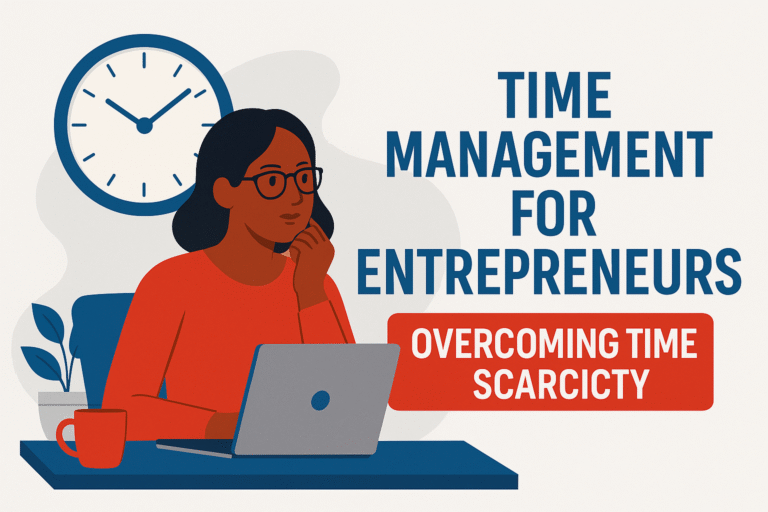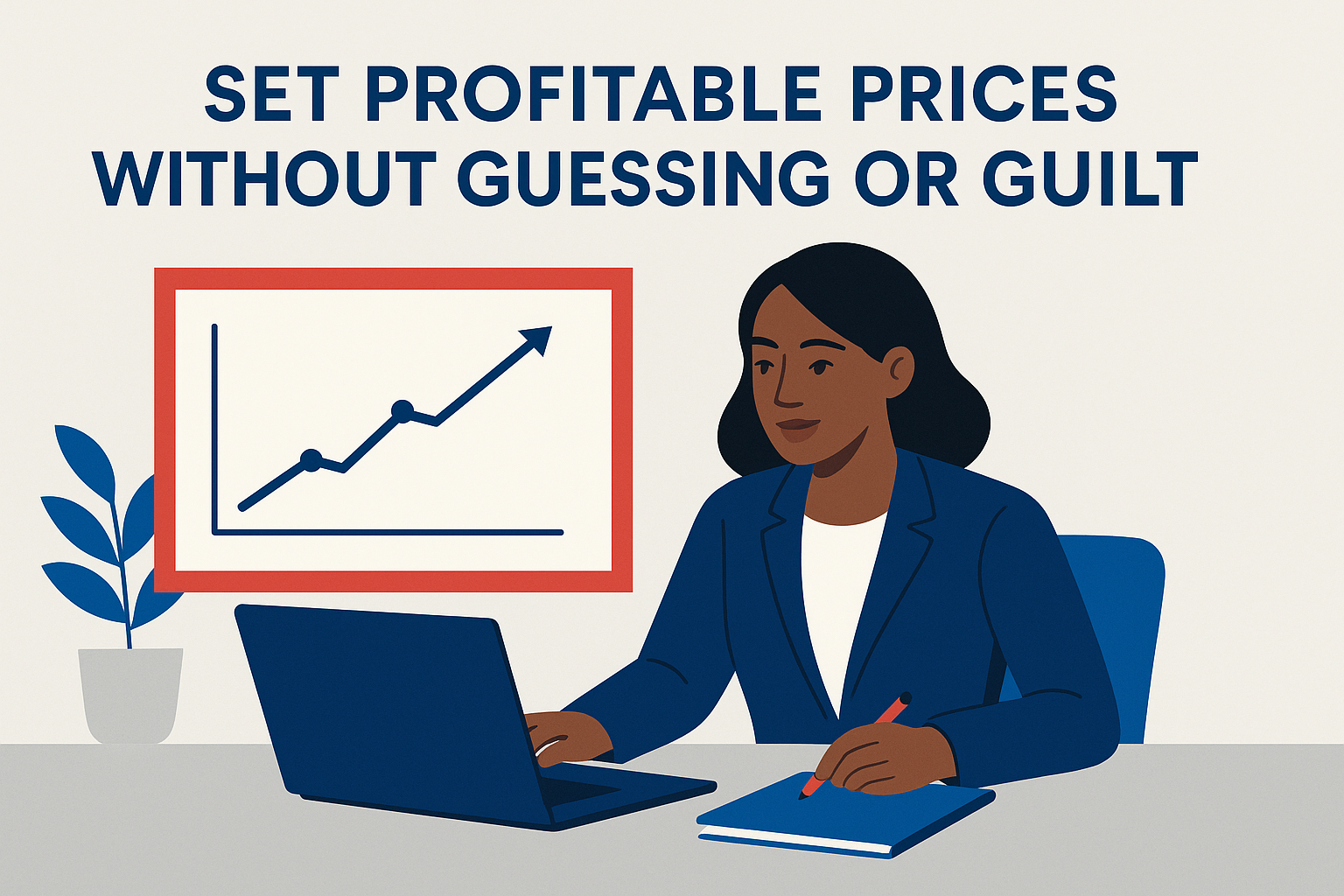CEO Mindset Monday
Business idea validation plays a constant role in how I run Backbone America—not because I doubt my ideas, but because I always have more than I can act on. From digital tools to new service offers, I keep a running list of things I’d love to build. The challenge isn’t generating ideas—it’s choosing the right ones to focus on.
That’s why I believe validation isn’t just for entrepreneurs who feel uncertain. It’s just as important for founders who are overflowing with good ideas and need a clear way to prioritize.
In this post, I want to reframe business idea validation as a strategic filter—not a stamp of approval. When you approach it through a CEO lens, validation becomes a decision-making tool that protects your time, sharpens your focus, and strengthens your business long-term.
Why Business Idea Validation Is Misunderstood

The deeper misunderstanding is this: people assume validation is only about proving an idea will work. But experienced founders know the real challenge isn’t usually a lack of viable ideas—it’s figuring out which ones are worth pursuing right now.
Think about Thomas Edison. He didn’t wait for the market to tell him a lightbulb was a good idea. He committed to the process and ran over a thousand experiments to make it viable. His success wasn’t about getting permission—it was about focus, persistence, and vision. That’s a CEO mindset.
Validation isn’t always about asking if the idea is good. Sometimes, it’s about trusting that it’s good—and deciding whether you have the time, resources, and strategy to build it well.
If you’re building a business for the long haul, you’ll have dozens of workable, even brilliant ideas over time. But chasing all of them at once? That’s how momentum dies. That’s how burnout begins. And that’s why the real power of validation isn’t external—it’s strategic. It helps you filter, focus, and commit.
The Hidden Cost of Too Many Good Ideas

I’m constantly capturing new ideas—offers I could create, automations I want to build, entire systems that would serve my audience well. Sometimes, I even outline entire products before hitting pause. Not because they lack potential—but because launching them would pull me away from what my business actually needs in that moment.
That’s the hidden cost of having too many good ideas: distraction. Creativity without focus can quietly drain your momentum. Every time you say yes to a new project, you’re also saying no to the time, energy, and clarity that your existing vision needs to grow. When too many ideas are competing for space, even your best ones can start to feel chaotic or incomplete.
It’s a constant effort to reel myself in and stay focused on moving toward a specific goal, rather than getting swept up in the next shiny new idea. As a CEO, part of my job is protecting the integrity of what I’ve already built. That’s why business idea validation isn’t just a test of the idea. It’s a test of timing, capacity, and alignment. And sometimes, a smart “no” is the most strategic move you can make.
The CEO Approach to Business Idea Validation

When I’m evaluating a new idea for Backbone America, I don’t just ask whether it’s good. I ask whether it’s aligned. Here’s the lens I use:
Does this support my long-term vision?
Not every opportunity fits the brand I’m building. If it doesn’t move me closer to where I want Backbone America to go, I pass.Is this strategically valuable?
Will it help grow my audience, increase revenue, or deepen client transformation? If not, it’s probably a distraction.Can I realistically deliver it with excellence?
Even great ideas can stretch your operations too thin. I assess whether I have the systems, support, and time to execute it well.Does this simplify or complicate my business?
If it adds confusion for my clients or overcomplicates internal workflows, it’s a no—for now.
I still keep my list of ideas. I can’t help myself. It’s something I’ve done for as long as I can remember—I have folders filled with book ideas, business products, and resources I haven’t built yet. It’s just how I think.
But that’s all they are for now: ideas. Sitting in the business idea incubator, waiting to be nurtured if or when the time is right. And that’s okay. Because part of being a CEO is knowing that the right idea, launched at the wrong time, is still the wrong move.
How to Prioritize When You Have Too Many Ideas
If you have a long list of business ideas, like me, it can be challenging to know where to start. That’s why I use a simple, flexible method to help me evaluate what’s worth building now, what should wait, and what needs to be shelved. I use a hybrid of two frameworks: a “Now, Next, Later” timeline and an Effort vs. Impact matrix. Here’s how I apply them:
Step 1: Get It All Out
I try to capture each idea that’s floating in my head—offers, upgrades, automations, new funnels, even content ideas. This does two things for me: first, it keeps those ideas from being forgotten. Second, it helps me clear my mind so I can actually focus.
I’m a list person. If I don’t capture something digitally or in a notebook, I start building mental lists instead—and that gets messy. I’ve noticed I’ll mentally add the same idea more than once, which makes my list feel bigger than it actually is. That creates unnecessary stress and anxiety, which only adds to the sense of overwhelm.
Step 2: Rate Each Idea by Effort and Impact
Once I’ve captured everything, I start evaluating each idea using two filters: Effort and Impact. This helps me shift from “what’s exciting” to “what’s strategic.”
Effort asks:
How much time, energy, tech, or team support will this require?
Will I need to create new systems or shift other priorities to make space?
Impact asks:
How much will this move the business forward—in revenue, reach, or transformation?
Does it directly support my growth goals, or is it just a nice idea?
Here’s what I’ve learned:
High-impact, low-effort ideas are golden. These go straight to the top of my list. They’re efficient, focused, and create meaningful results without draining capacity. This is the core of the 80/20 rule—a few high-leverage actions often create the biggest results.
High-effort, low-impact ideas are distractions in disguise. They may look impressive, but they don’t serve the business. I’ve learned to shelve or release them.
Medium-impact, medium-effort ideas live in the “Maybe Later” pile. They’re not bad, but they’re rarely worth immediate attention unless they fill a specific gap.
High-impact, high-effort ideas deserve special attention. Some of the most valuable things I’ve built—like the 31-Day Business Startup Challenge—fall into this zone. They take time, planning, and significant execution energy. But the return isn’t just financial—it’s transformational. When I see one of these, I don’t jump in blindly. I ask:
Can I phase it out over time?
Do I have—or need to hire—the support to do it well?
Will it replace or streamline something else?
Step 3: Categorize: Now, Next, Later

Now: These are the ideas I’m actively building or preparing to launch. They’re usually high-impact, reasonably low-effort, and fully aligned with my current goals. Multitasking isn’t my forte, so I focus on one major initiative at a time here—anything more splits my attention too much.
Next: These ideas are valuable, but the timing isn’t quite right. Maybe I’m waiting for another project to wrap up, or I need to build a foundational piece first. I revisit my “Next” list once I finish a project and decide what to move forward next.
Later: These are good ideas, but the timing isn’t right. I capture them so I don’t lose them, but I don’t let them clutter my short-term focus. A lot of my high-impact, high-effort projects end up here—things that are worth doing but not worth rushing. I revisit this list when the smaller projects are stable and I have the capacity to take on something bigger. It’s like a holding space for ideas that need more room to grow.
This final layer of business idea validation gives me breathing room. It reminds me that I don’t have to build everything at once. Strategic growth isn’t about doing more—it’s about doing the right things in the right order.
It also gives me peace of mind. I’m attached to my ideas, but I know I don’t have time for everything—especially not all at once. Categorizing them helps me stay focused without feeling like I’m letting anything go. It gives me hope. My ideas aren’t lost or forgotten. They’re not sent to the graveyard to die—they’re waiting in a system I trust.
Conclusion: Build With Focus, Not Pressure
If you’re carrying more ideas than you can act on, you’re not doing anything wrong. You’re doing what creative, strategic founders do—you’re thinking ahead. But business idea validation isn’t about proving your worth or keeping up with your potential. It’s about protecting your time, your energy, and the integrity of what you’re building.
You don’t have to choose between dreaming big and staying focused. You can do both—by putting structure around your ideas. When you prioritize with intention, your next step becomes clearer. You don’t have to feel behind. You don’t have to chase everything. And you don’t have to abandon the ideas that aren’t ready yet. They’re not gone. They’re just waiting.
And when you are ready to test and refine one of those ideas, tools like the 31-Day Business Startup Challenge are here to help you move forward with confidence—on your terms, and in your time.
You are not short on ideas. You’re just one clear decision away from momentum.






